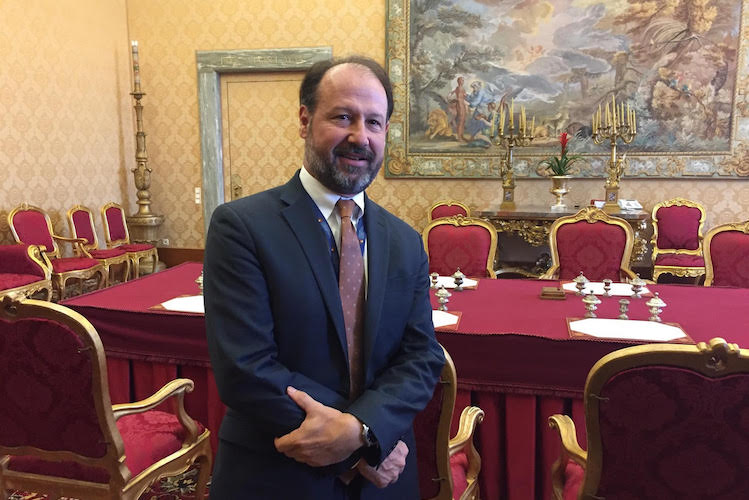
Viewpoint by Daryl G. Kimball
The writer is the executive director of Arms Control Association and publisher of Arms Control Today since 2001. The following is the text of Mr Kimball’s Foreword to 2021 Joint Media Project Report of the Non-Profit International Press Syndicate Group with IDN as flagship agency in partnership with Soka Gakkai International in consultative status with ECOSOC.
WASHINGTON, DC (IDN) — An informed and mobilized public is essential to human survival in the nuclear age—and effective and independent journalism is essential to revealing the hard truths, the consequences, and the choices that nuclear weapons pose for all of us.
Since the first U.S. atomic bombings of the cities of Hiroshima and Nagasaki, journalists have played an essential role in delivering facts—and dismantling the fictions—about the world’s most dangerous weapons.
As the late physicist, U.S. government nuclear weapons advisor, and nuclear disarmament advocate Dr. Sidney Drell wrote in 1983, matters of nuclear weapons and nuclear policy are “too important to be left to the experts …. All of us are the targets of these undiscriminating weapons of mass destruction. There is, therefore, no excuse for us not to constitute an informed and an effective public constituency insisting on the imperative of arms control”.
Equipped with information about the catastrophic risks of nuclear weapons and common-sense strategies to reduce and eliminate them, ordinary people, along with concerned scientists, physicians, and diplomats have organized and successfully pressed their political leaders to slow and reverse the nuclear arms race.
The result of public mobilization against the Bomb has been a vast body of bilateral and multilateral agreements to end nuclear testing, curb the spread of nuclear weapons and nuclear know-how, and to cap and verifiably eliminate nuclear arsenals. And, beginning this year, the new Treaty on the Prohibition of Nuclear Weapons entered into force, establishing yet another tool in the legal framework for disarmament that further reinforces the taboo against nuclear weapons.
None of this might have been possible without the work of journalists and editors who have, over many decades, brought to light the dangers of the bomb, who have documented the intense public debate surrounding nuclear weapons and how and whether to eliminate them.
For example, it took the pioneering, on-the-ground reporting by John Hersey published in The New Yorker in August 1946 to finally reveal the horrific consequences of nuclear weapons—the blast, heat, radiation effects—that the U.S. occupation authorities tried to hide from the world.
Unfortunately, during the early Cold War years, many mainstream news outlets in the United States and Europe downplayed the risks, many could not break through the veil of secrecy that surrounded nuclear matters, and many simply failed to question the official government line.
In the Soviet Union, of course, where the news media was essentially another arm of the government, it was even more difficult for ordinary citizens to learn about the devastating human and environmental effects of nuclear weapons production and testing, and to challenge dangerous nuclear policies.
With the help of concerned nuclear scientists and public health experts, however, some speciality journals and newspapers helped fill the gaps in the public record. In 1962 for example, The New England Journal of Medicine published a groundbreaking series of articles by a group of physicians documenting the effects of a Soviet nuclear attack on an American city and the devastation of the medical and emergency response infrastructure. Appearing just months ahead of the Cuban Missile Crisis, the articles exploded the myth that one or another side could “prevail” in a nuclear war.
In other cases, modest but important newspaper reporting helped catalyze events that inspired action in support of disarmament on a massive scale. In February 1979, The St. Petersburg [Fla.] Times newspaper enlisted the help of Arms Control Association Executive Director William Kincade and freelance journalist Nan Randall to help write a four-day series of articles describing the effects of a Soviet nuclear warhead exploding over the city.
Randall’s account drew the attention of the Office of Technology Assessment (OTA), a federal scientific advisory agency, which enlisted her to write a similar account for the 1979 OTA report on “The Effects of Nuclear Weapons.” That report would, in turn, become an inspiration for the director and writer who was tapped to create an ABC-TV docudrama on the human consequences of nuclear conflict titled The Day After.
When it was broadcast the evening of November 20, 1983, The Day After drew some 100 million viewers, then a record audience for a made-for-television movie. The movie boosted public U.S. support for the nuclear freeze movement, demanded the attention of government policymakers, (including President Ronald Reagan), and prompted action to reduce the danger.
Then as now, the mass media is still the main source of public information about the dangers of the Bomb and efforts to eliminate the nuclear threat. In today’s hyper-information age in which the fact is hard to discern from fiction, government disinformation is taking on new forms, independent news networks with a special focus on covering developments and ideas related to the world’s most dangerous weapons are more vital than ever.
Since 1983, IDN-InDepthNews and its network of contributors and correspondents has provided invaluable coverage for people worldwide who are concerned about the nuclear weapons threat. Today, the long-running struggle to eliminate the nuclear weapons threat has taken on a new urgency as global nuclear competition and the risk of nuclear war is growing.
In this dangerous new phase of the nuclear age, the focused coverage that IDN-InDepthNews provides on effective solutions and ideas and actions to strengthen the guardrails against nuclear catastrophe and advance progress toward a world free of nuclear weapons is more vital than ever. [IDN-InDepthNews — 12 May 2021]
Photo: The writer at the Vatican in 2019.











